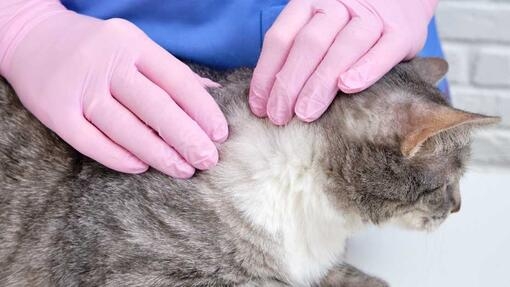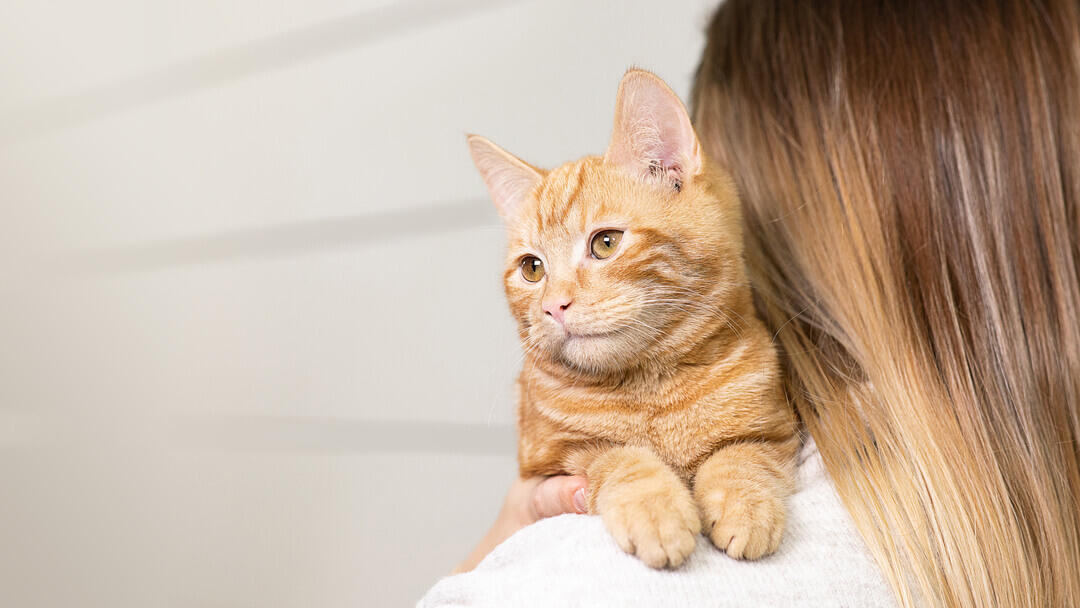
Cat mites can be itchy and uncomfortable for our feline friends. You might have noticed your cat scratching more or maybe their fur isn’t looking its best. If this is the case, you’ll want to think about getting them checked for cat mites.
Keep reading for our ultimate guide to cat mites so you know what to look for, and how to treat them.
What are cat mites?
Cat mites are microscopic parasites that live on or in the skin or fur. There are different types of mites, including:
- Ear mites (otodectic mange)
- Harvest mites (trombiculosis)
- Walking dandruff (cheletiellosis)
- Feline scabies (notoedric mange)
- Feline demodicosis
The appearance of these mites varies. Cheyletiellosis is also known as walking dandruff because the mites look like tiny white dots moving within the coat. By contrast, the mites that cause feline scabies and feline demodicosis are not visible to the naked eye. Cat mites can multiply at a quick rate so it’s important to start treatment quickly.
How do cats get mites
Cats can get mites from simply being outdoors or from being in close contact with other cats. Some cat mites, such as the feline scabies mite are very contagious, but fortunately this form of mange is very rare.
What are cat mite symptoms?
Cat mites are hard to see with the naked eye, and some can only be seen with a microscope. This is why it is important to look out for other signs of mite infestation such as skin irritation. Here are a few of the signs that you might see:
- Excessive head shaking and ear scratching
- General scratching
- Dull coat
- Hair loss
- Red or inflamed skin
- Dry coat
It’s best to get prompt treatment, as cat mites can cause severe irritation and some mites may be harder to treat once the infestation has become established. Severe infestations may cause a cat’s general health to decline, although this is unusual. Signs of poor general health may include:
- Loss of appetite
- Weight loss
- Gastrointestinal issues
- Fever
- Restlessness
What is the treatment for cat mites?
If your cat has mites, it’s important that the infestation is treated straight away. The treatment that your vet prescribes will depend on the particular type of mite. For example, for ear mites, your vet might prescribe ear drops, or a spot-on medication. For harvest mite, they may recommend a spray. They might also prescribe a cream, shampoo or ointment. They will also instruct you on how to use it and when to return for a check-up.
How can I stop cat mites from coming back?
It is very difficult to stop cat mites coming back with complete certainty, especially if your cat goes outdoors. However, keeping up your cat’s routine parasite prevention and looking after their general health can help. Your vet will determine the best flea and worming plan for your pet, taking into account factors like lifestyle and whether your cat comes into close contact with children.
Flea prevention products come in different formulations, including spot-ons, collars and tablets. If your vet recommends a flea tablet, you may wonder how to get your cat to take a tablet every month. Why not read our blog how to give your cat pills for lots of handy tips to make sure they don’t spit it straight back out!
Cat fur mites vs ear mites: what’s the difference?
Cat fur mites and ear mites are quite similar - the main difference is where they live on your cat. Fur mites will live in your cat’s fur, whereas ear mites can be found around or in your cat’s ear canals. We have a helpful guide on cat ear mites for more information.
Can cat mites be passed on to other pets?
Cat mites can be passed from feline to feline, so if you have more than one cat, it’s important to get them all checked out. There’s a high possibility that if one cat has mites in a household, the other cats will be affected too.
Some types of cat mites can also be passed from cat to dog. It’s a good idea to check for dog mites if your cat has symptoms.
Can humans be infected by cat mites?
Cat mites aren’t a risk to humans in the way they are to cats. Most cat mites cannot be passed from cats to humans.
We hope this guide on cat mites was helpful. These pesky parasites can be uncomfortable for your cat so getting them treated is a top priority. Next, see our guide on cat fleas and cat worms for all you need to know about parasites in cats.










